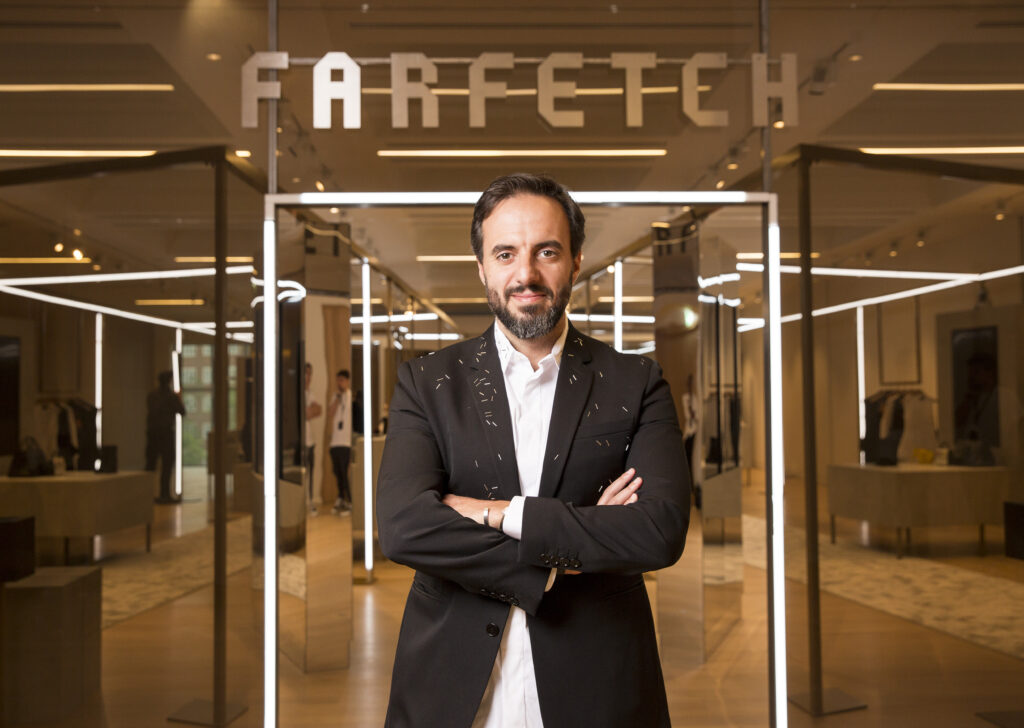
Last week (28 November), news broke that Farfetch founder and CEO José Neves was looking to take the business private five years after it went public on the New York Stock Exchange (NYSE).
Neves, who founded Farfetch in 2007, is understood to be in talks with bankers and top shareholders including Swiss luxury conglomerate Richemont and Chinese ecommerce giant Alibaba about delisting the company.
This was followed by a delay in its third quarter financial results previously scheduled for Wednesday (29 November). Farfetch said in a statement: “The company expects to provide a market update in due course. The company will not be providing any forecasts or guidance at this time, and any prior forecasts or guidance should no longer be relied upon.”
Analysts say a potential delisting could be a bid to reset the business away from the public eye. In August, Farfetch reported a 1.3% fall in revenue to $527m (£450m) in the three months to 30 June 2023, driven by a decrease in brand platform and in-store revenues. Gross profit was down 10% year on year to $242m (£190m) during the quarter, while gross profit margin was 42.5%, compared with 46.2% in the previous year.
For the 12 months ending 31 December 2022 adjusted EBITDA was a loss of $98.7m (£82m) compared to an EBITDA of $1.63m (£1.35m) the previous year.
Advertisement
Wizz Selvey, founder and CEO of retail insights firm Wizz & Co, said: “Taking the business private after a lot of scrutiny over the past year, from the failure of the beauty [division], a drop in revenue with the brand incubator platform [New Guards Group, which operates Off-White and Palm Angel] to challenging trading performance, may provide an opportunity to review and pivot the strategy without being under public scrutiny.”
Joanne Chow, CEO and co-founder of fashion analytics company Jellibeans said Farfetch’s [potential] move to privatise its business “is a strategic response to many market challenges including a weakening online global luxury demand following the return of consumers to physical retail, significant debt load, cash burn, and more.”
“These factors have likely contributed to Farfetch’s preference to tackle these operational and financial challenges without public market scrutiny,” Chow added.
However, Jelena Sokolova, senior equity analyst at investment research firm Morningstar, said the priority for the company is to restore its financial position.
“I think for all parties involved the essential issue now is the quick resolution of the situation and assurance that the company remains liquid, solvent and a going concern. Whether it is private or public is of a secondary concern,” she said.
Advertisement
“The longer the situation remains unclear the more likely that suppliers and partners will not be willing to commit to the company.”
Sokolova pointed to the fact that Richemont was quick to inform the markets that its divisions have not adopted Farfetch’s technology platform, Farfetch Platform Solutions. The Swiss conglomerate also said that “it has no financial obligations towards Farfetch” and “does not envisage lending or investing” into the business.
Liquidity at Farfetch as of June 30, 2023 stood at $453.8m (£358.2m), a drop of $287.2m (£226.6m) compared with the start of the year.
One restructuring source said that Farfetch “is burning a lot of cash and needs to think about how it can stay afloat”.
Meanwhile, a potential deal for Farfetch to buy a 47.5% stake in its rival Yoox Net-A-Porter (YNAP) in exchange for the issuance of Farfetch Class A ordinary shares to Richemont, has also stalled.
It is understood that the deal will need to be renegotiated if Farfetch is taken private as it was planned as a stock deal. Last month, Drapers revealed that Farfetch had appointed former Latin America VP Daniel Funis to the role of Yoox Net-A-Porter CEO.
Analysts say the challenges facing Farfetch are a “significant blow to the wholesale channel” in luxury ecommerce, paving the way for some consolidation and shakeouts.
Luca Solca, senior luxury goods analyst at research firm Bernstein, said: “Farfetch had offered to independent boutiques – if well managed – the opportunity to expand their sales, monetise excess inventory and beef up their fragile bottom line.
“The collapse of Farfetch would provide another significant blow to the wholesale channel. We expect other players will make the most of it, if Farfetch indeed disappeared.”
In August, Farfetch exited its beauty arm, which it launched in April 2022, stocking more than 100 brands including Charlotte Tilbury and Gucci Beauty. During the same month, Drapers exclusively reported that it was making redundancies across teams in London and New York. The move led to 800 job cuts at the company, about 11% of its total workforce.
Morningstar’s Sokolova concurred: “Online luxury industry is still relatively immature with shifts in leadership. YNAP used to be market leader, then ceded this role to Farfetch which now itself struggles.
“The slowdown in luxury demand in combination with difficult comparison base against Covid years, lower capital availability, provides ground for some consolidation and shakeouts.”
